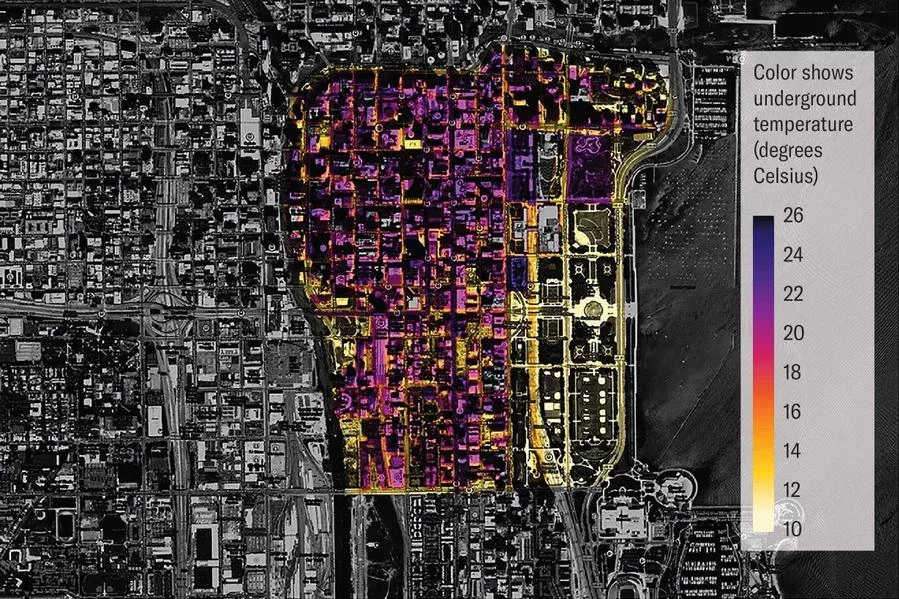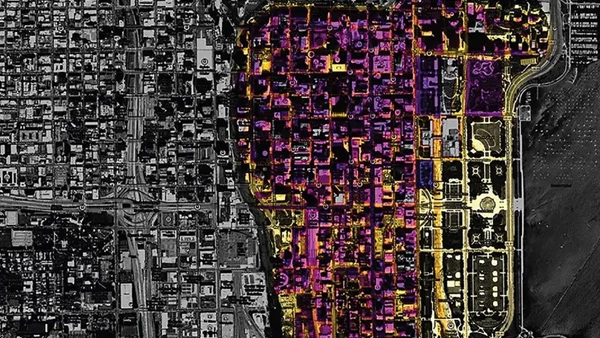
Colors show underground temperatures in Chicago’s Loop district. Credit: Alessandro F. Rotta Loria (temperature data); OpenStreetMap (base map) (CC BY-SA 2.0)
Hotspots beneath cities deform the ground, causing important infrastructure to crack under stress
The streets, sidewalks and roofs of cities all absorb heat during the day, making some urban areas up to six degrees Fahrenheit hotter than rural ones during the day—and 22 degrees F hotter at night. These “urban heat islands” can also develop underground as the city heat diffuses downward, beneath the surface. And basements, subway tunnels and other subterranean infrastructure also constantly bleed heat into the surrounding earth, creating hotspots. Now that underground heat is building up as the planet warms...
Scientific American: Underground Climate Change Is Weakening Buildings in Slow Motion
SOIL | Subsurface Opportunities + Innovations Laboratory



